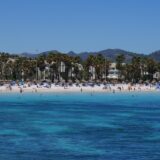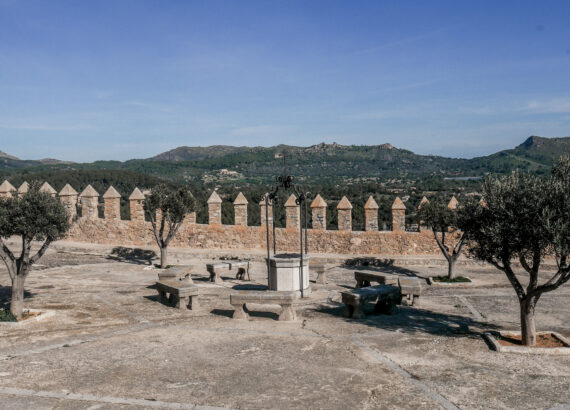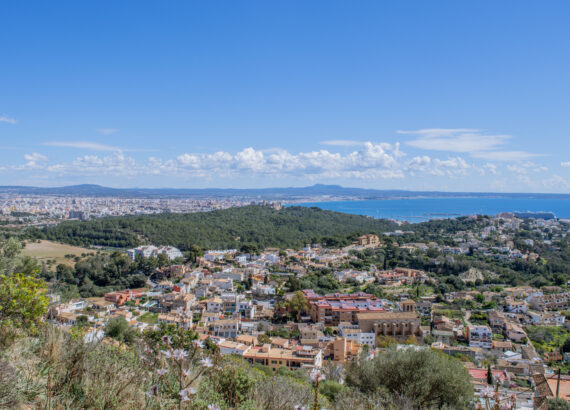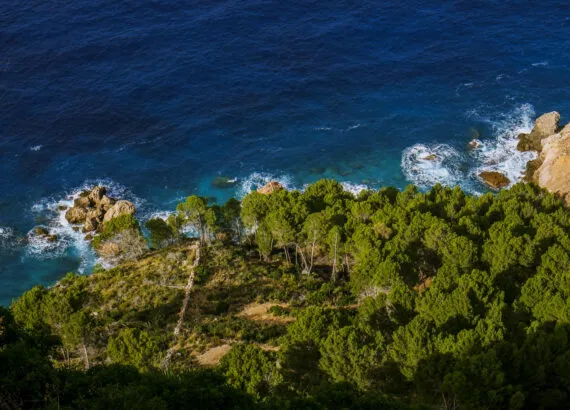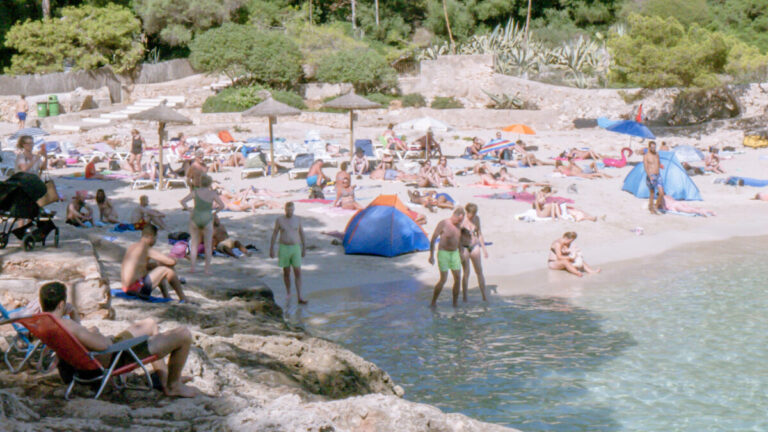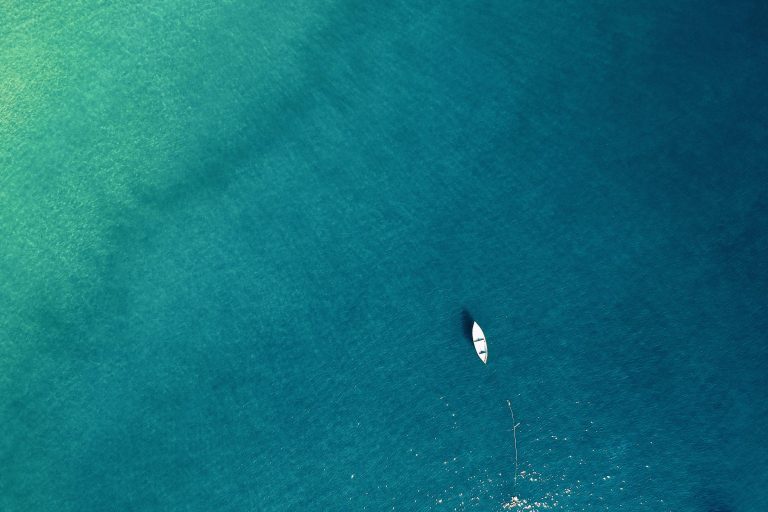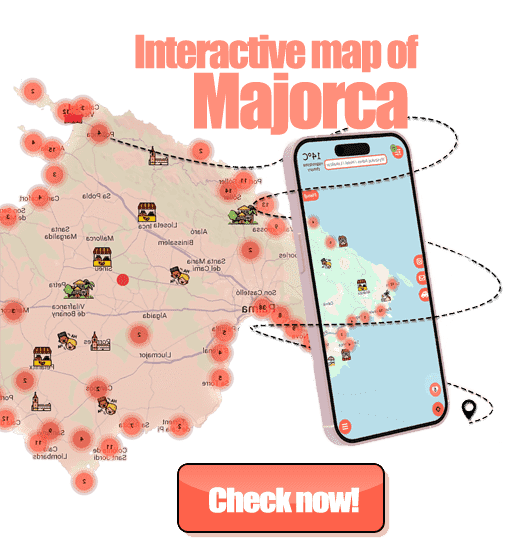Holidays in Mallorca – everything you HAVE TO know
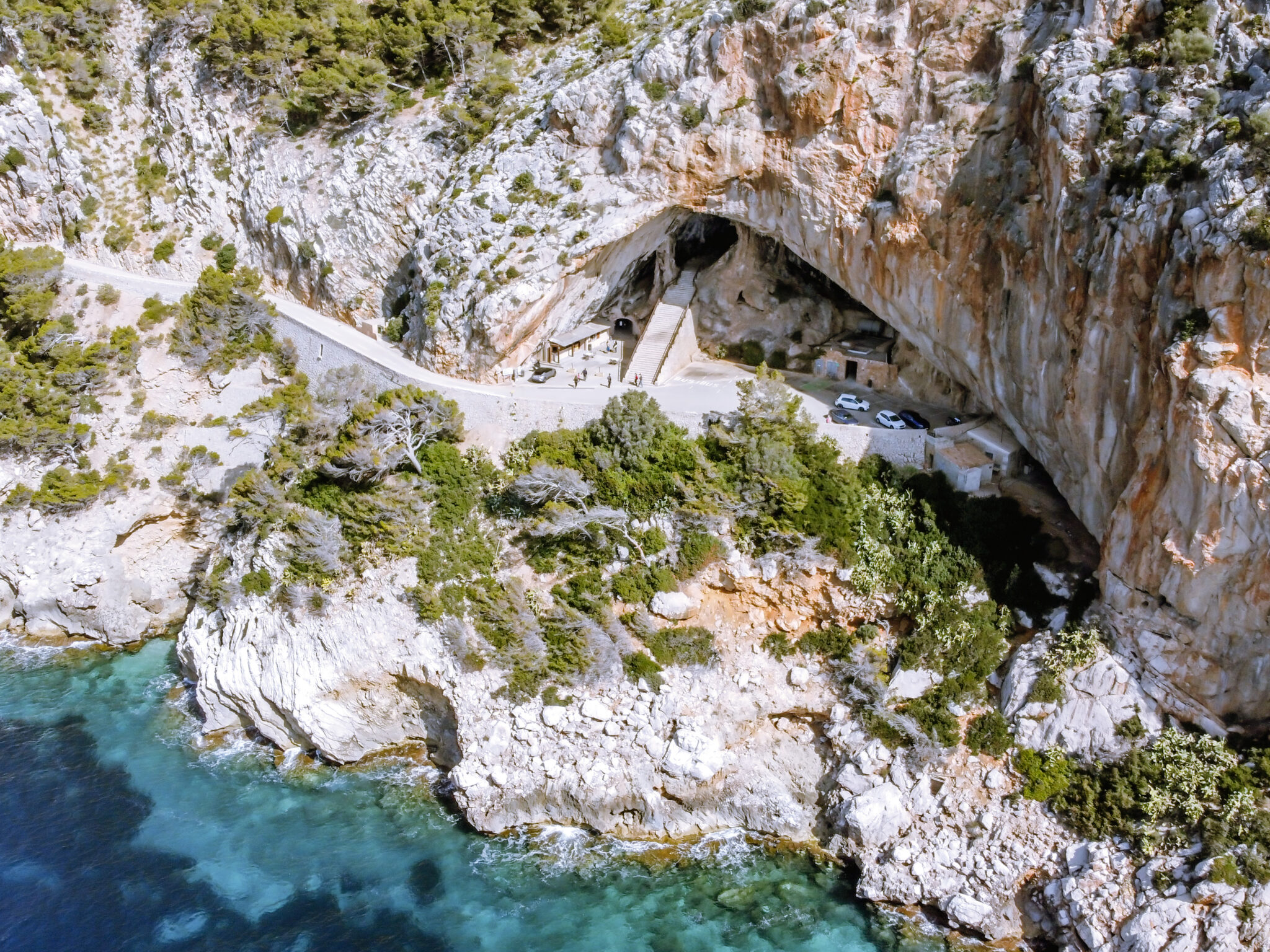
Holidays in Mallorca – Everything You MUST Know
Holidays in Mallorca are a fantastic choice for people looking for stunning views, paradise beaches, peace, and proximity to nature, as well as parties, rich culture, and history. Mallorca has everything you’re searching for, and its diverse landscape means that even mountain and cycling enthusiasts will find something to enjoy here.
Mallorca, the largest island in the Balearic archipelago, is a true paradise for tourists. Located in the Mediterranean Sea, it enchants with its varied landscapes, from sandy beaches to mountainous interiors.
Few things you must know before heading to your Holidays in Mallorca:
Area: Mallorca covers an area of approximately 3,640 km², making it the largest of the Balearic Islands.
Official Language: The official languages in Mallorca, as in all of Spain, are Catalan and Spanish. However, due to the island’s long history and cultural influences, you will often hear the Mallorcan dialect, or mallorquin, especially in certain regions.
Currency: The currency in Mallorca is the euro.
Climate: Mallorca lies within the Mediterranean climate zone, characterized by hot, dry summers and mild winters. The average temperature in July and August is about 25-30°C.
Island Structure: Mallorca is mountainous, with its highest peak being Puig Major (1,445 meters), located in the UNESCO-listed Serra de Tramuntana mountain range. The island is also known for its beautiful beaches, splendid coves, and picturesque villages.
How to Get to Mallorca: The most popular way to reach Mallorca is by plane. There are direct flights to Palma de Mallorca from most major Polish cities, making travel fast and convenient. Other options include taking a ferry or driving. Although there are no direct ferries from Poland, there are ferry services from some Western European ports to the Balearic Islands. Driving can be a good option for those who want more flexibility while exploring the island and are planning a longer stay.
Capital of Mallorca: The capital is Palma de Mallorca, a vibrant city that combines modernity with a rich history. In Palma, you’ll find beautiful landmarks like La Seu Cathedral, the Almudaina Royal Palace, and Bellver Castle. It’s also a great starting point for exploring other parts of the island, with its port offering ferries to nearby islands and an airport with flights to destinations around the world.
Holidays in Mallorca – When to Visit Mallorca?
Mallorca entices with sunshine (statistically shining 300 days a year) and warm seas for most of the year, but each season has its unique charm. Choosing the ideal travel time depends on what you’re looking for. Let’s break down the year by season to give you a better idea of the weather on the island:
Summer (June – August)
Advantages: The warmest months of the year, guaranteeing sunny days and the chance to swim in the sea, even at night. Beautiful views, the most vibrant water colors, and the widest range of attractions.
Disadvantages: The largest crowds of tourists, high accommodation and flight prices, and limited sightseeing options due to the heat.
For whom: Ideal for those dreaming of beach time, water sports, warm sea, fully enjoying the island’s beauty, or intense nightlife.
Spring (March – May) and Autumn (September – October)
Advantages: Pleasant temperatures, fewer tourists, lower accommodation and flight prices, perfect for sightseeing and active leisure without worrying about heat or heavy traffic. There is still a wide selection of attractions. In May and September, there are still beach chairs and umbrellas for rent; from October to April, beaches are completely empty.
Disadvantages: Spring weather can be unpredictable, and days start getting shorter in autumn. Expect occasional cloudy skies, scattered showers, or heavy rain, and cooler evenings.
For whom: Ideal for those preferring a peaceful getaway, sightseeing, and nature. Perfect time for mountain trips, exploring towns, and enjoying empty beaches.
Winter (November – February)
Advantages: Lowest prices, the chance to enjoy tourist attractions without crowds. Beautiful holiday decorations across the island, plus many events associated with it. Ideal conditions for mountain walks, with waterfalls (like Salt des Freu) appearing after heavy rains. Beaches are completely empty.
Disadvantages: Cooler weather, some attractions may be closed. Limited hotel choices (most are closed). No direct flights from many Polish cities; only LOT operates the Warsaw – Palma de Mallorca (WAW-PMI) route in winter. Low-cost flights are available from places like Berlin. More rain and downpours.
For whom: Ideal for those looking to save money and explore Mallorca in a more relaxed atmosphere, without the pressure of perfect weather.
May Holidays and Easter: This is a good time to start the tourist season. The weather is usually pleasant, and prices aren’t yet too high.
Holidays: If you’re planning a trip during the holiday season, it’s worth booking accommodation and flights in advance as prices may be higher.
Remember, Mallorca’s climate is mild, so even in winter, you can expect many sunny days.
Holidays in Mallorca – How to Get to Mallorca?
Plane: This is the fastest and undoubtedly the most popular way to reach Mallorca. Direct flights to Palma are available from major cities all around the world. With a short flight, you’ll be on the sunny island in just a few hours. The most popular airline flying to Mallorca is, of course, Ryanair. Travel agencies and other airlines also offer flights. Use popular flight comparison sites to find the best option for you.
Flights are scheduled several times a week from April to October. From November to March, there are fewer flights options.
Ferry: This is an excellent option for fans of sea travel. You can find ferry services from ports in Europe, like Barcelona. However, ferry travel is longer than a flight and usually more expensive, especially if you choose to travel by car. Ferries also run less frequently than planes.
Holidays in Mallorca – Where to Stay?
Mallorca is an island with plenty to offer, whether you’re traveling with family, on your own, or looking for nightlife adventures. To help you choose the perfect place to stay, I’ve divided the island into several categories. Make sure your Mallorca vacation is perfect by picking the right spot!
For families with children:
North Coast:
- Alcúdia, Playa de Muro: A calm area with a long, sandy beach, perfect for building sandcastles.
- Can Picafort: Another peaceful town with a wide beach and gentle water entry.
East Coast:
- Sa Coma and Cala Millor: A tranquil area with a long beach and gentle water entry, ideal for families with young children.
- Cala Ratjada and Cala Agulla: A larger area with more entertainment options, while still retaining a family-friendly character.
South Coast:
- Cala d’Or: A sizable town full of charming small coves, with gentle water entry and the chance to visit multiple beaches in a day.
- Palma Nova/Magaluf: More lively towns with urban beaches, and plenty of attractions for children nearby, like Western Water Park, Katmandu, and Mini Golf Fantasia.
Why these areas? These regions are famous for their wide, sandy beaches, gentle water entry, and calm atmosphere. You’ll find many hotels with kids’ clubs, playgrounds, and pools here.
For singles and party-goers:
- Palma: The island’s capital is a bustling city with a rich cultural scene, restaurants, and bars.
- Magaluf: Known for its nightlife, with many clubs and bars.
- El Arenal: Popular among young people, offering plenty of hotels, bars, and clubs.
Why these places? Palma is ideal for those who want to mix sightseeing with nightlife. Magaluf and El Arenal are party havens, where you can dance until dawn. All these areas are also great bases for exploring the island.
For older couples:
- Deià, Sóller, and Valldemossa: Charming mountain villages known for their artistic ambiance and stunning views.
- Can Picafort, Can Pastilla, Cala Ratjada, Cala Millor, Playa de Muro: Calmer areas with beautiful, long beaches and promenades lined with restaurants.
Why these places? These towns are perfect for couples looking to escape the city hustle and enjoy nature’s beauty during Holidays in Mallorca. You’ll find plenty of romantic spots to share special moments together.
For couples:
- All the above locations: Mallorca offers plenty to couples, whether they’re looking for active vacations or romantic getaways. However, I particularly recommend Cala Ratjada, Cala d’Or, Sa Coma, or Palmanova—great bases for exploring, plus beautiful views and interesting beaches. Mallorca is an ideal vacation spot for couples of all ages.
Holidays in Mallorca – What to Pack?
Mallorca is an island that lures with sunshine and beautiful beaches for most of the year. However, to fully enjoy your holiday, it’s worth being prepared. Here’s what to pack for Mallorca to stay comfortable, regardless of the season:
Spring (March-May)
- Clothing: Lightweight cotton clothing with long sleeves for wind protection, as well as shorts and t-shirts for warmer days. Don’t forget a light sweater or sweatshirt for the evenings.
- Footwear: Light sneakers, sandals, and flip-flops. If you plan to hike, bring trekking shoes.
- Accessories: Sunglasses, a hat or cap, high SPF sunscreen, an umbrella (just in case of rain), and a light rain jacket.
Summer (June-September)
- Clothing: Light, breathable clothing made from natural fabrics. Swimsuit, sarong, tunic, shorts, and t-shirts are essential. Remember to bring a hat and sunglasses.
- Footwear: Sandals, flip-flops, water shoes. Trekking shoes if needed.
- Accessories: Very high SPF sunscreen, lip balm, beach towel.
Autumn (October-November)
- Clothing: Lightweight long-sleeved clothing, including dresses, jeans, sweaters, and a rain jacket. Also, bring a warm sweater for cooler evenings.
- Footwear: Light sneakers, sandals, trekking shoes if you plan to hike.
- Accessories: Sunglasses, a hat or cap, SPF sunscreen, and an umbrella.
Winter (December-February)
- Clothing: Warm clothing like sweaters, jackets, and sweatpants. Warm socks, a scarf, and a jacket may also come in handy.
- Footwear: Warm boots, like winter or trekking boots.
- Accessories: Hat, gloves, scarf, sunglasses, and an umbrella.
Additional Tips:
- First Aid Kit: It’s helpful to bring basic medications like painkillers, fever reducers, plasters, and insect bite relief.
- Documents: ID, insurance card, plane tickets, and hotel reservation.
- Money: Cash (euros) and a debit/credit card. Most places in Mallorca accept card payments, including buses. Revolut is also accepted.
- Phone Charger: Don’t forget your phone charger and a power bank if needed. Electrical outlets in Mallorca are the same as in most European countries.
Reminder: The weather in Mallorca can be unpredictable, even in one day, so it’s best to pack clothing for various temperatures.
How Much Money to Take to Mallorca? A Practical Budget Guide
Mallorca is a beautiful island that attracts both beach lovers and enthusiasts of culture and nature. However, to fully enjoy your vacation, it’s essential to plan your budget well. So, how much money should you bring for a holiday in Mallorca? This is a question many tourists ask.
What to Consider When Planning Your Budget during Holidays in Mallorca?
The cost of a trip to Mallorca depends on several factors, such as:
- Travel season: Prices peak in the summer season (June-August).
- Type of accommodation: From budget hostels with shared rooms to luxury hotels.
- Food: From self-catering to dining in restaurants and bars.
- Transport: Flights, car rentals, public transport.
- Tourist attractions: Entrance fees to museums, excursions, water sports.
- Shopping: Souvenirs, clothing, local products.
Sample Weekly Budget for Two People:
- Flights: approx. £40-£400 (depending on season and airline)
- Accommodation: £400-£800 (depending on standard and location)
- Food: £300-£600 (including breakfast at the hotel, lunches and dinners in restaurants, snacks, drinks)
- Local transport: £100-£200 (car rental or public transportation)
- Tourist attractions: £100-£200 (depending on the number of sites visited)
- Shopping: £100
- Extra expenses: £100 (tips, unexpected costs)
Total: approx. £1200-£2000
How to Save on a Mallorca Vacation?
- Choose a less popular time: Off-season prices are significantly lower.
- Book accommodation in advance: You can take advantage of early promotions.
- Cook for yourself: Opt for an apartment with a kitchenette and prepare some meals. Major supermarkets like Lidl and Carrefour are available in Mallorca.
- Use public transportation: It’s cheaper than renting a car, and paying by card is the most affordable option for ticket purchases.
- Look for free attractions: Beaches, parks, city walks, public villas, gardens.
- Buy local products at markets or small grocery stores: They’re cheaper than in regular stores.
The cost of a Mallorca holiday depends on your personal preferences and expectations. You can plan either a budget-friendly or luxurious vacation. Remember to carefully plan your trip and set priorities. This will help you avoid any unpleasant financial surprises.
Mallorca: What to See?
Mallorca is an island that delights with its diverse landscapes, rich history, and vibrant culture. From scenic coves to mountainous areas, everyone will find something to enjoy. Here are a few must-visit places on Mallorca:
Must-Sees in Mallorca:
- Palma de Mallorca: The island’s capital combines historic architecture, bustling life, and beautiful beaches. Be sure to visit the Gothic La Seu Cathedral, Bellver Castle, and stroll through the old town.
- Deià: A picturesque village in the Serra de Tramuntana mountains, attracting artists and lovers of tranquility.
- Sóller: A charming town with a historic train connecting Sóller to Palma. Be sure to visit its port to try fresh seafood or enjoy ice cream made from local oranges.
- Valldemossa: A romantic village known for the Carthusian monastery, where Frédéric Chopin stayed.
- Formentor: The northernmost point of the island, offering breathtaking views.
- Drach Caves: Impressive caves with an underground lake, where classical music concerts are held.
- Mondragó Natural Park: Ideal for nature lovers, with diverse vegetation, wildlife, and beautiful bays.
These are just a few places worth visiting on the island, but the truth is, there’s much more to see. These 7 spots are just a glimpse. To learn more about must-see places on Mallorca, check out my map of top locations on Mallorca HERE. Additionally, I highly recommend reading my posts on the island’s top attractions, from the most beautiful beaches to romantic towns HERE.
Safety in Mallorca – What You Need to Know
Mallorca is a popular tourist destination that attracts millions of visitors each year. It is typically associated with relaxing holidays, beautiful beaches, and a friendly atmosphere. But what about safety on this Mediterranean island?
Overall, Mallorca is considered a safe place for tourists. Crime is low, and most locals are friendly and helpful. However, as in any other place, basic precautions are advisable.
Read the post about dangerous animals in Mallorca HERE.
Most Dangerous Neighborhoods in Palma de Mallorca:
- Son Banya: Located on the outskirts, Son Banya is known as the main drug distribution center and has a high crime rate.
- La Soledat Nord: This area sees numerous robberies and crimes, so caution is advised during exploration.
- Son Gotleu: Located in the municipality of Inca, Son Gotleu is considered one of the most dangerous districts on the island, associated with violence and drug trafficking.
- El Rafal Nou: Located on the outskirts, El Rafal Nou has a higher number of robberies and crimes, especially at dusk.
- El Vivero: Also on the outskirts, El Vivero is a place of frequent robberies and crimes, especially at night.
- Levante Industrial Estate: Like the previous one, Levante Industrial Estate is a frequent location for attacks and crimes, particularly at night.
- La Soledat Sud: Another district of Palma, La Soledat Sud is associated with crime and violence, which warrants particular caution.
Where to Exercise Caution during your holidays in Mallorca:
- Unlit areas in large cities: As elsewhere, it’s best to avoid walking alone on dark streets, especially late at night.
- Natural hazards: Mallorca has steep cliffs and deep caves. Be especially cautious when visiting such sites.
- Pickpockets: In crowded places like markets or buses, watch out for pickpockets.
- Tourist spots and parking areas: Places like Formentor, Mirador Es Colomer, Sa Foradada, and similar are highly prone to thefts.
Common Risks for Tourists:
- Thefts: The most common issue is the theft of wallets, phones, and other valuables, including from cars.
- Scammers: In some places, you might encounter people trying to scam tourists.
How to Increase Your Safety?
- Don’t leave valuables unattended: Especially on the beach or in the car.
- Use the hotel safe: It’s a secure place to store your passport, money, and other important documents.
- Inform family or friends of your plans: This can make it easier to locate you in case of any issues.
- Trust your intuition: If something feels suspicious, it’s best to change your plans.
- Get insurance: Purchasing adequate travel insurance is a good idea.
Mallorca is a safe destination for tourists. However, as everywhere, it’s advisable to use common sense and follow basic safety rules. Doing so will allow you to fully enjoy your vacation.
How to Get Around Mallorca?
Mallorca offers plenty of transportation options to explore the island, whether you prefer comfort or active travel. The right choice depends on your preferences, budget, and planned activities.
Car Rental (Get a 10% discount and discover the best rental companies HERE):
Pros: Maximum freedom to explore, air conditioning, ability to reach remote areas, and flexibility in planning routes.
Cons: Rental costs and finding parking spaces.
Public Transport
Buses: The most popular public transport on Mallorca. The network is extensive, and buses regularly serve most towns. You can pay by cash or card. Learn more about public transport HERE.
Trains: Mallorca has several rail lines connecting larger cities. It’s a good alternative to buses if you’re looking for quick and convenient travel.
Metro: A small metro network operates in Palma, useful for getting around the capital.
Advantages of Public Transport:
Low cost: Usually cheaper than renting a car.
Eco–friendly: Less impact on the environment.
No stress: No need to worry about parking.
Organization: Public transport in Mallorca is coordinated with Google Maps and the Moovit app.
Disadvantages of Public Transport:
Less flexibility: Schedules might be less convenient than with a rental car.
Less direct routes: Transfers are often required, and buses won’t take you everywhere on the island. Many cities aren’t connected directly, like Alcudia – Cala Ratjada.
Bicycle
Pros: A healthy and eco-friendly way to travel, ideal for exploring smaller towns and areas that are hard to reach by car.
Cons: Requires good physical fitness, not suitable for long distances, and weather-dependent.
Scooter/Motorbike (Contact me if you’re looking to rent a scooter with a discount!)
Pros: Great mobility and the ability to move quickly around the island.
Cons: Requires a license and may be risky for inexperienced riders.
Taxi
Pros: Quick and comfortable, especially for short distances.
Cons: The most expensive option, with high prices, especially during peak hours. Only state-regulated taxis operate on Mallorca, and Uber is only available in the capital and nearby areas.
Other Options
Organized Tours: A great way to see popular sites and learn about the island’s history. Looking for tours with a English-speaking guide? Check HERE.
Hiking: Perfect for active travelers, ideal for exploring the area around your accommodation.
Tips:
Get a tourist card: It often includes discounts for public transport and tourist attractions (only available in Palma and nearby areas).
Check schedules: Especially if you plan to use public transport. I recommend Google Maps, the Moovit app, and the official TIB MALLORCA public transport website.
Review car rental conditions: Pay attention to insurance, deposits, and mileage limits. For options without deposits and full insurance included, plus a discount, check HERE.
Use navigation apps: They make getting around the island easier. I recommend Google Maps.
Holidays in Mallorca – Got Questions?
Want to know more about preparing for your dream holidays in Mallorca? Looking for information on the best shopping spots, local cuisine, or practical tips? ☀️ Contact me on Instagram or Facebook! I’ll answer all your questions and share the latest updates. On my blog, you’ll find many helpful articles to help you plan an unforgettable holiday. Check out the TOP 10, GUIDES categories to discover the island’s most beautiful spots and learn more about it. Make your holidays in Mallorca the best time of your life!
Get in Touch
If you need help planning your holiday in Mallorca or have any questions, message me – I’d be happy to advise on what to focus on when planning your trip.
Follow me on Instagram, where I post daily stories straight from Mallorca. Join to stay updated on life on this magical island!
Instagram: https://www.instagram.com/balearaiso/
🌴 ❗ THIS WILL INTEREST YOU ❗ 🌴
Itineraries, Ebooks, Map + Planner!
Book with a discount of up to -10%!
An interactive map linked to Google Maps!
With the code “MAJORKA5” -5% on all attractions!
Find the place for the perfect meal!
Find the best hotel in Mallorca!
Let’s do something extraordinary!

